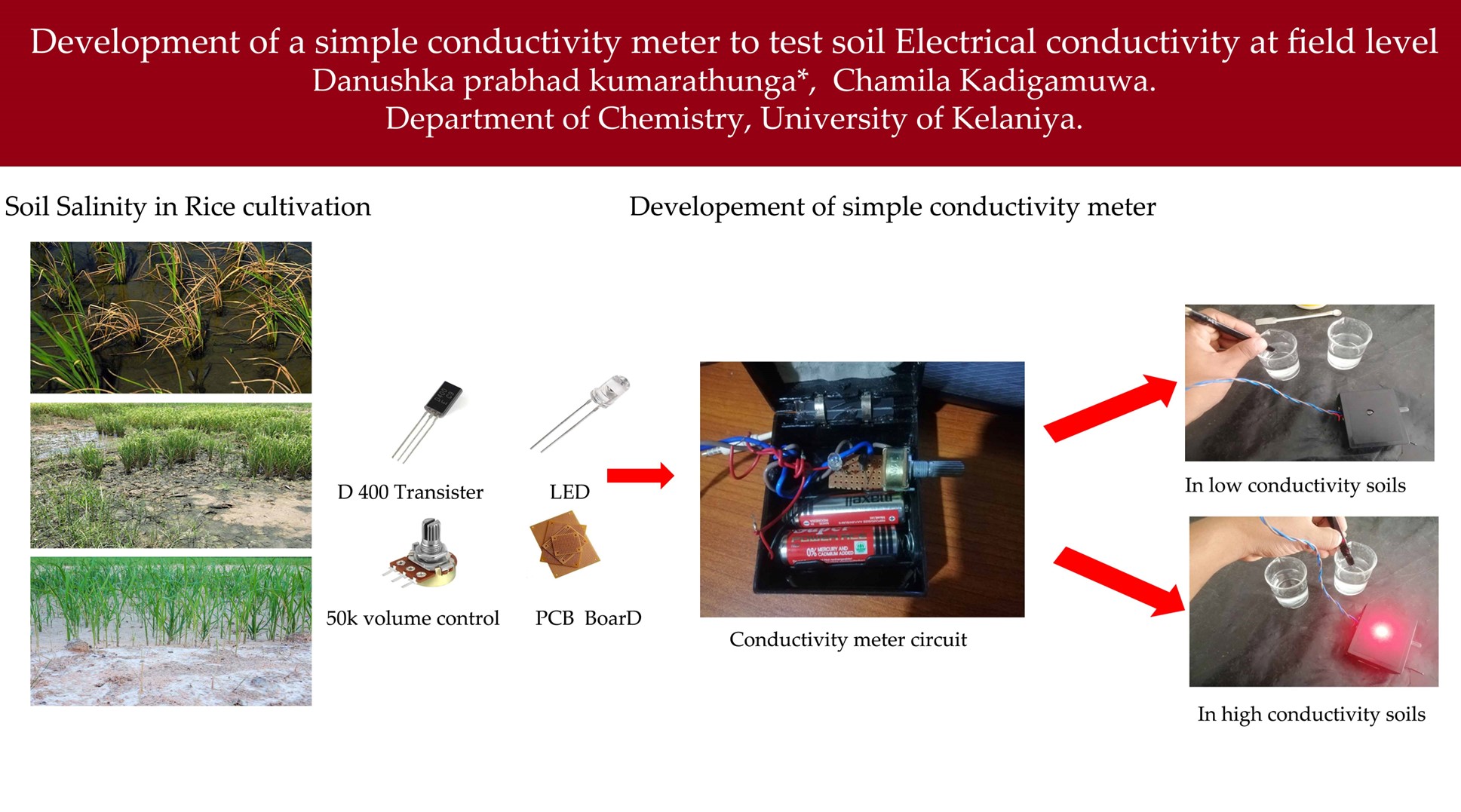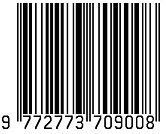Development of a Simple Conductivity Meter to Test Soil Electrical Conductivity at the Field Level
DOI:
https://doi.org/10.31357/ait.v2i4.5494Abstract
Soil salinity is one of the most common problems in agricultural fields. Saline soils reduce crop yield. The most common method for testing soil salinity is the test of Electrical Conductivity (EC) of a given soil solution by using a soil conductivity meter. Many farmers are unaware of their soil salinity because soil testing facilities are not available at the field level in Sri Lanka. Therefore, a requirement for a simple conductivity meter that can be used in the field is high. Thus, in this study, the aim is to develop a simple soil electrical conductivity meter by using a D400 transistor, 50K volume control, and an LED. The developed simple soil electrical conductivity meter was calibrated using standard KCl s
Soil salinity is one of the most common problems in agricultural fields. Saline soils reduce crop yield. The most common method for testing soil salinity is the test of Electrical Conductivity (EC) of a given soil solution by using a soil conductivity meter. Many farmers are unaware of their soil salinity because soil testing facilities are not available at the field level in Sri Lanka. Therefore, the requirement for a simple conductivity meter that can be used in the field is high. Thus, in this study, the aim is to develop a simple soil electrical conductivity meter by using a D400 transistor, 50K volume control, and an LED. The developed simple soil electrical conductivity meter was calibrated using standard KCl solutions with conductivities of 0.2 ms/m and 0.4 ms/m respectively. Finally, the EC of eighteen soil samples around Sri Lanka was tested using a laboratory soil conductivity meter (Spectrum Tech. ECTestr 11+) and the developed simple conductivity meter. Our results indicate that this simple conductivity meter works well with Sri Lankan soil and could be promoted among farmers to test and increase awareness about soil salinity.
olutions with the conductivities of 0.2 ms/m and 0.4 ms/m respectively. Finally, the EC of eighteen soil samples around Sri Lanka was tested using a laboratory soil conductivity meter (Spectrum Tech. ECTestr 11+) and the developed simple conductivity meter. Our results indicate that this simple conductivity meter works well with Sri Lankan soil and could be promoted among farmers to test and increase awareness about soil salinity.

Downloads
Published
How to Cite
License
Copyright (c) 2022 Malavige Danushka Prabhad Kumarathunga, Dr. C.C. Kadigamuwa

This work is licensed under a Creative Commons Attribution-NonCommercial-NoDerivatives 4.0 International License.
The Authors hold the copyright of their manuscripts, and all articles are circulated under the terms of the Creative Commons Attribution License, which permits unrestricted use, distribution, and reproduction in any medium, as long as that the original work is properly cited.
The use of general descriptive names, trade names, trademarks, and so forth in this publication, even if not specifically identified, does not imply that these names are not protected by the relevant laws and regulations. The authors are responsible for securing any permissions needed for the reuse of copyrighted materials included in the manuscript.




